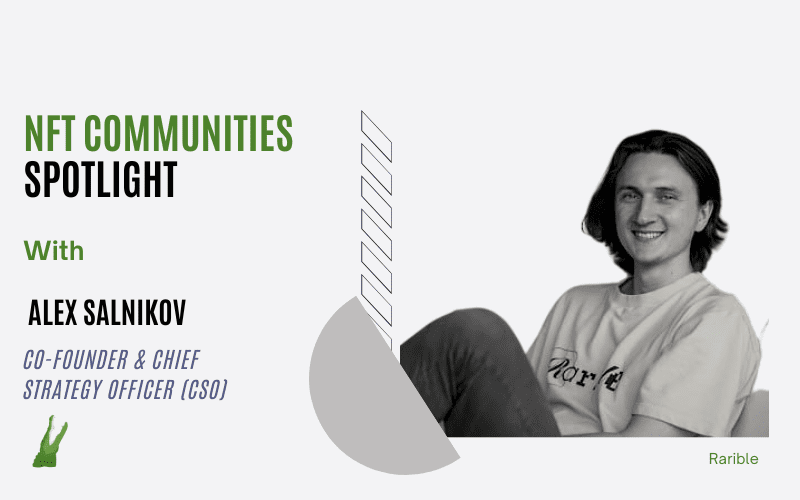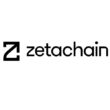Quick take:
- Alex Salnikov tells us how Rarible is empowering creators and communities through its multi-chain aggregated NFT marketplace.
- He also talks about the important role that brands with massive user bases could play in the mass adoption of NFTs.
- And the major obstacles slowing the mainstream adoption of NFTs.
The non-fungible token (NFT) market has experienced a substantial decline in activity over the past 12 months. Transaction volumes have plummeted to record lows with NFTgo’s blue-chip index (the analytics platform’s weighted market cap of blue-chip NFTs) falling to 5256, down from 10,000 in August 2022.
There are many theories as to why the NFT industry has slowed down over the past twelve months. Some think the initial hype has dried out, while others think the crypto winter had a negative impact.
In this Q&A we reached out to one of the major players in the space to establish what could be hindering the growth that the industry promised between 2021 and the first half of 2022.
Alex Salnikov co-founded Rarible, an NFT marketplace that focuses on building strong communities and empowering creators and brands. According to Salnikov, one of the biggest hurdles slowing down the adoption of NFTs is the user-friendliness and interoperability of NFT platforms.
In order to onboard the mainstream to web3, innovation is key, which is why NFT marketplaces are integrating multiple blockchains to allow users to access more markets from one place.
Rarible has integrated multiple blockchains including Polygon, Tezos, and Ethereum into its aggregator marketplace. This enables it to offer multichain support for NFTs.
Alex delves more into this, the importance of empowering NFT communities and his journey in web3 in the Q&A below.
Please tell us about your journey in web3 and your role at Rarible.
I’ve been in the blockchain and crypto scene since 2012, when I first started trading different crypto tokens and building crypto start-ups as a university student. I then launched my own company, where I led product at a token launch start-up, which helped clients seamlessly launch ERC-20 tokens in 2017.
I have a Bachelor’s in Computer Science and a Master’s in Data Science, which has allowed me to focus on market analysis, decentralized finance, NFTs, and tokenomics across various sectors. I bring that background into my current position as the Co-Founder & Chief Strategy Officer (CSO) of Rarible, a decentralized marketplace for digital collectibles on EVM chains.
In 2019, I helped launch Rarible as I began brainstorming about possible products to make blockchain technology more accessible to the average, non-DeFi trader. Rarible grew out of the desire to create something fresh and user-friendly. As CSO, I am constantly evaluating how we can spur innovation in the NFT space by empowering creators and brands to easily distribute / monetize their IP as well as build community. It’s been a rollercoaster ride working in the NFT space, but also super rewarding.
Is there anything specific that distinguishes Rarible from other NFT marketplaces?
Rarible stands out for its focus on empowering creators and NFT communities to grow. We achieve this by providing a marketplace for creators across multiple chains, including Ethereum, Polygon, Solana, Tezos, and additional integrations happening in the pipeline.
Beyond providing the fastest and most comprehensive aggregated marketplace to drive liquidity, Rarible’s self-serve marketplace builder on Polygon allows creators to establish their custom marketplaces with ease. We took care to craft a minting process that was user-friendly and cost-effective, enabling easy NFT creation without technical expertise or high fees. Creators benefit from customizable NFTs and can set royalty fees for ongoing earnings on secondary sales. For brands seeking more customization, we also provide a white glove service so that household names like Mattel, McFarlane Toys, and US Golf Association can create a uniquely branded platform for their community.
We hope to become the go-to destination not just for creators, but also collectors who might be new to the NFT space. We’ve begun non-crypto-friendly marketplace features, like NFT checkout with credit cards, free / low-cost open editions for users to dabble into NFT collecting, as well as collaborations with household brands like the US Golf Association (USGA), Barbie, and Smurfs.
Which aspects/use cases of the NFT industry do you think will contribute more to the mass adoption of NFTs?
When we talk about the mass adoption of NFTs, we focus on the web3 native projects that have been born from the space, but must also focus energy on considering mainstream users. One way to achieve this is by collaborating with brands that have a massive global following and a rich legacy. Our partnerships with iconic names like Mattel, involving their timeless brands like Hot Wheels and Barbie, as well as our collaboration with MacFarlane Toys for the Batman and Superman drop, are perfect examples.
These collaborations allow brands to leverage their vast audiences and tap into the NFT space with ease. With Rarible’s platform, they can quickly deploy custom marketplaces. But what makes it even more groundbreaking is the ability for consumers to purchase NFTs using credit cards. This seemingly simple integration drastically simplifies the user onboarding process. Imagine a long-time Hot Wheels enthusiast or a Barbie collector being able to own a digital collectible without the need to understand the intricacies of cryptocurrency.
It’s these bridges between the traditional and digital worlds that will fuel the mass adoption of NFTs. By making it as seamless as buying a product online, we’re demystifying NFTs and making them accessible to everyone, from the tech-savvy to the everyday fan.
How high do you rank the importance of NFT communities for the success of a project?
NFT communities are absolutely pivotal. They don’t just bring vitality to a platform; they drive organic growth through genuine word-of-mouth promotion, connections to build sub-DAOs that further drive hype, as well as commitment / loyalty to a community and project mission. Feedback from these communities is also invaluable, guiding creators to refine their work and push the boundaries of innovation – we’ve seen this take place with creators like Jack Butcher, Frank from DeGods, and elsewhere.
What are the biggest challenges that the NFT industry is facing? And is there a way of overcoming them?
Indeed, the NFT industry is dynamic and rapidly evolving. One of the most significant challenges we currently face is user-friendliness. At Rarible, our vision is to streamline the onboarding process and make the entire platform experience as intuitive as possible and to help the public to explore and appreciate all the possible use cases for NFT technology.
Speaking of onboarding, the issue of wallet innovation in this space is crucial. The marketplaces of tomorrow can’t solely rely on a single Ethereum wallet. Nor can it rely on wallets that make log-in and security hard to understand. We’re envisioning a future that demands multi-chain and frictionless solutions.
And, beyond the technical aspects, there’s a broader challenge – the perception of NFTs. Right now, many see NFTs merely as speculative assets, but their potential goes far beyond that. Whether it’s commemorating fandom, unlocking exclusive content, or numerous other utilities, NFTs have so much to offer. We need to drive a shift in understanding, ensuring the public recognizes the multifaceted value of NFTs beyond just financial gains.
Interoperability between different NFT platforms, projects, and blockchain networks is another hurdle to overcome. Achieving cross-chain compatibility would enable seamless transfers of NFTs and enhance the overall liquidity and accessibility of assets. We’re trying to make progress on our cross-chain mission every day at Rarible.
While these challenges are significant, they also present opportunities for growth and improvement. By collaborating as an industry, embracing technological advancements, and adhering to best practices, we can collectively overcome these hurdles and build a more sustainable, inclusive, and trustworthy NFT ecosystem that benefits creators, collectors, and enthusiasts alike.
What is your take on Google Play’s recent policy change to allow the listing of blockchain-based apps?
Google Play’s choice to list blockchain-based apps is a significant nod to blockchain’s growing relevance. At Rarible, we view this as a clear sign that major tech players are recognizing blockchain’s potential. This move opens the door for more users to explore decentralized applications and fosters innovation among developers. It’s a welcome step towards a more integrated and decentralized digital landscape.
Ordinals have reignited interest in the NFT industry since the beginning of the year, does Rarible have any plans for Bitcoin Ordinals?
At the moment, we do not have near-term plans to support Bitcoin Ordinals on our platform, but we remain focused on our cross-chain vision, so the community can expect us to continue evaluating NFT developments across other ecosystems and having Rarible play a part of that narrative. We know that supporting a multi-chain set-up for NFTs benefits both creators and collectors by enabling them to reach a broader audience.
Given the recent decline in NFT collection floor prices and market caps, where do you see the NFT industry in five years?
NFTs are not going away–the technology will only continue to accelerate and improve. In five years, as we see more household brands enter web3, we will see new use cases of NFTs that are applicable to a non-crypto audience emerge, including games, brands launching loyalty and reward programs, digital access passes, and token-gated content. Many of these brands will expand the definition and utilities for NFTs while abstracting away technical concepts, wallet set-up, and funding that may be barriers to entry for non-web3 familiar users.
****
Stay up to date:
Subscribe to our newsletter using this link – we won’t spam!





